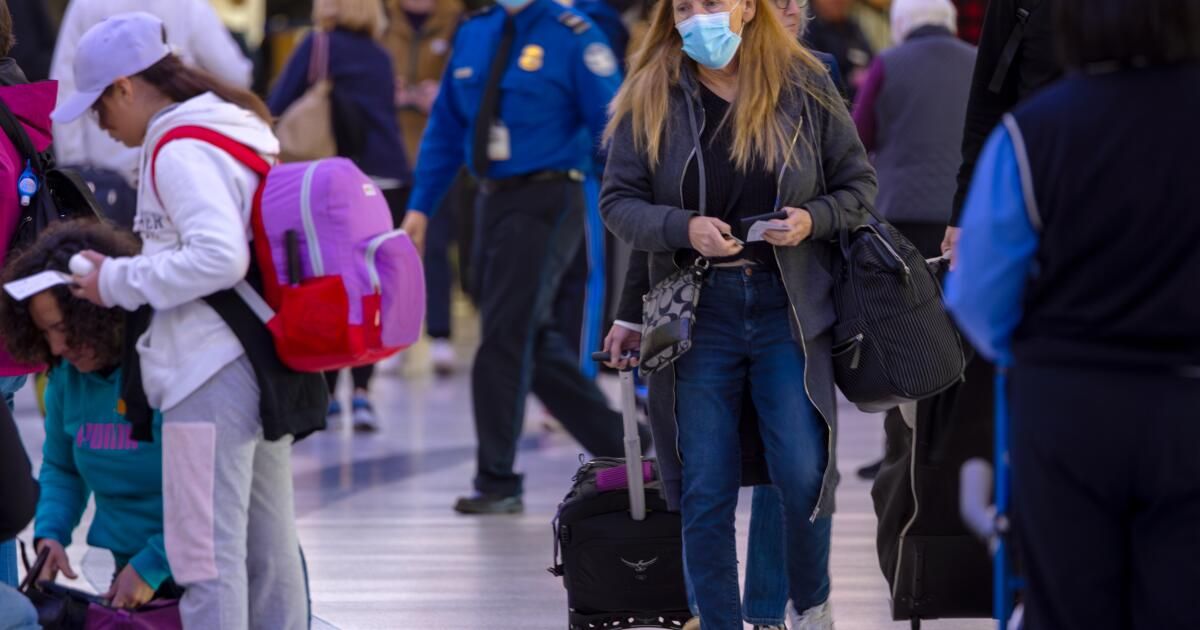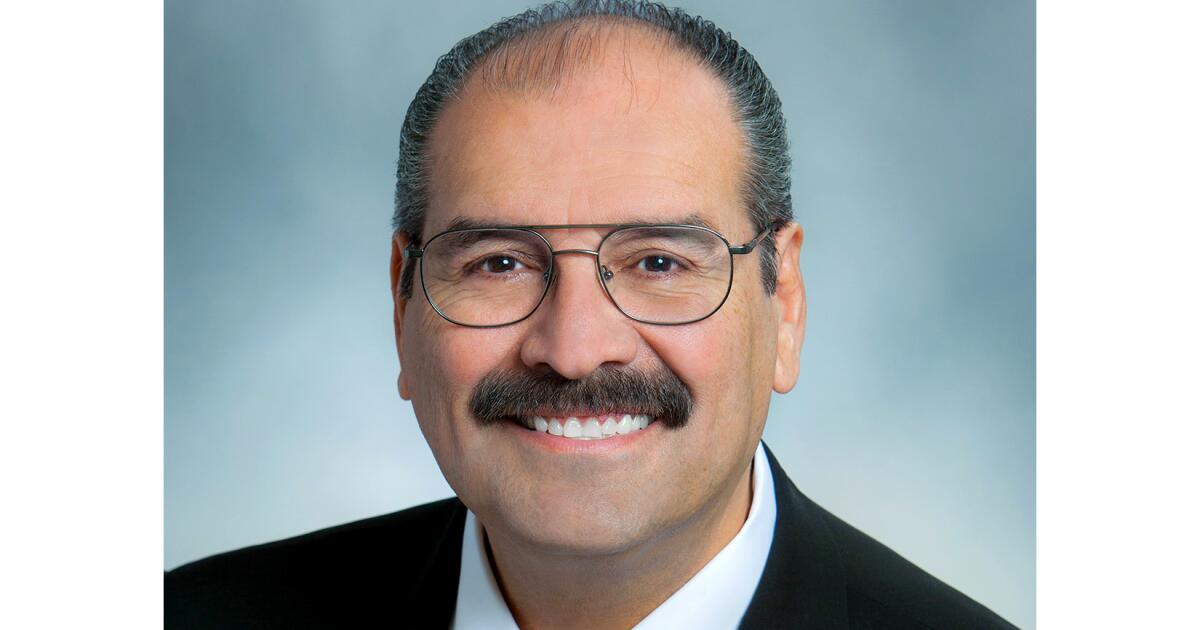Two new subvariants of COVID-19, collectively dubbed FLiRT, are increasingly outpacing the dominant winter strain ahead of a possible surge in coronavirus infections in the summer.
The new FLiRT subvariants, officially known as KP.2 and KP.1.1, are believed to be about 20% more transmissible than their parent, JN.1, the dominant winter subvariant, said specialist Dr. Peter Chin-Hong. in infectious diseases. expert at UC San Francisco.
The two FLiRT subvariants combined accounted for about 35% of coronavirus infections nationwide during the two-week period beginning April 28, according to the U.S. Centers for Disease Control and Prevention. , JN.1 is now thought to account for 16% of infections; by mid-winter, more than 80% were attributed to it.
“It's been quite some time since we've had a new dominant variant in the United States,” said Dr. David Bronstein, an infectious disease specialist at Kaiser Permanente Southern California. “With each of these variants replacing the previous one, we see greater transmissibility: it is easier to transmit from person to person. So that’s really the concern with FLiRT.”
The largest FLiRT subvariant, KP.2, is growing particularly fast as a proportion of coronavirus infections. At the end of March, it represented only 4% of estimated national infections; more recently, it is estimated to represent 28.2%.
The new subvariants have been named FLiRT after the mutations of the evolved COVID-19 virus. “So instead of an 'L,' there's an 'F.' And instead of a 'T', there's an 'R'. And then they put an 'i' on it to make it cute,” Chin-Hong said.
Despite their greater transmissibility, the new mutations do not appear to cause more severe disease. And the vaccine is expected to continue working well, given that the new subvariants are only slightly different from the winter version.
The entry of the subvariants also occurs when COVID-19 hospitalizations reach historic lows. During the week ending April 27, there were 5,098 entries, one-seventh of this winter's peak, which saw 35,137 entries during the week ending January 6.
However, as of May 1, hospitals nationwide are no longer required to report COVID-19 admissions to the U.S. Department of Health and Human Services; Now only voluntarily submitted data will be published nationally.
In Los Angeles County, COVID-19 levels appear to be calm. During the week ending April 27, coronavirus levels in Los Angeles County wastewater were 8% of the winter peak.
Still, some doctors say they wouldn't be surprised if there was a spike in COVID cases in the summer, as there has been in previous seasons.
“By summer, we can expect people's immunity to be a little lower,” Chin-Hong said. Older or immunocompromised people “are potentially at risk for more serious illnesses.”
Additionally, people often gather indoors during the summer to avoid the heat, which can increase the risk of transmission in crowded public places.
Chin-Hong said he is caring for COVID-19 patients at UC San Francisco who are seriously ill and who “were very old or very immunocompromised and did not receive the latest vaccines.”
The fact that FLiRT subvariants spread more easily underscores how important it is for those most at risk to stay up to date on their vaccines and stay away from those who are sick, doctors say.
And while the chance of long COVID is likely lower than in the early days of the pandemic, it still exists.
Data shows that many people have not received a recent COVID-19 vaccine. During the week ending February 24, 29% of seniors nationwide had received a dose of the updated vaccine that became available in September. In California, as of April 30, about 36% of seniors had received an updated dose.
“We continue to see those hospitalizations and poor outcomes, and even people dying from COVID. It hasn’t gone away,” Bronstein said. “The good news is… the vaccine is still very good at protecting you against hospitalizations, serious outcomes and death.”
Between October and April, more than 42,000 COVID-19 deaths were recorded nationwide, according to the CDC. That figure is significantly higher than the estimated flu deaths during the same period: 24,000.
Still, the figure is lower than the comparable period last season, when more than 70,000 COVID deaths were reported. And that figure is much lower than that of the first two devastating pandemic winters: between October 2021 and April 2022, more than 272,000 deaths were recorded; and between October 2020 and April 2021, the figure was more than 370,000.
In February, the CDC recommended that people 65 and older receive a second dose of the updated vaccine as long as at least four months have passed since a previous shot. The CDC also says everyone over 6 months old should get one dose of the updated vaccine.
“Right now, the most important thing people can do is get vaccinated,” Bronstein said. He suggested that those who are especially vulnerable continue to wear masks whenever possible, especially in places like crowded airports and airplanes.
Additionally, he said, it is important for sick people to stay home to avoid spreading germs to other people, especially the elderly. And if sick people must leave home, they should wear a mask when around other people.
“Even in the summer, what may seem like a cold may actually be a COVID infection,” Bronstein said. “We need to make sure that if he is sick, we will test him whenever possible, stay home … and make sure that his symptoms are milder before he decides to return to his usual activities.”
California recommends that people with COVID-19 symptoms stay home until their symptoms are mild and improve and they have been fever-free for 24 hours without medication.
They must also wear a mask around other people while indoors for 10 days after getting sick or, if they have no symptoms, after testing positive. They can stop wearing a mask sooner if they get two consecutive negative rapid test results at least one day apart. But they should avoid contact with all higher-risk people for 10 days, according to the state Department of Public Health.
And ahead of this summer's travel plans, Chin-Hong suggested seniors talk to their healthcare provider to make sure that if they contract COVID-19, Paxlovid can be prescribed without interfering with other medications. Paxlovid is an antiviral medication that, when taken by people at risk for severe COVID-19 who have mild to moderate illness, reduces the risk of hospitalization and death.
Chin-Hong also suggests that it makes sense for healthcare providers to prescribe Paxlovid to higher-risk people who plan to travel where the drug may not be available, as a “just in case” prescription. Doctors have that discretion since Paxlovid has been fully approved by the U.S. Food and Drug Administration, giving healthcare providers greater freedom to decide when to prescribe the drug.
Earlier this year, another drug was also made available to help protect the most vulnerable people, such as cancer patients and those who have received organ transplants. It is a monoclonal antibody called Pemgarda, which is given intravenously and can be given once every three months. Authorized by the FDA for emergency use, it is administered prophylactically and can help recipients prevent COVID-19 if they are later exposed to an infected person.
Expectations are also rising that a new version of the COVID-19 vaccine will be released possibly in September. It could be designed against last winter's JN.1 strain, but it's also possible officials will decide it should be designed against the growing FLiRT subvariants, Chin-Hong said.












